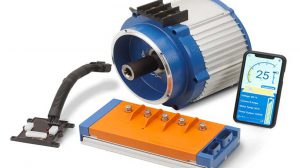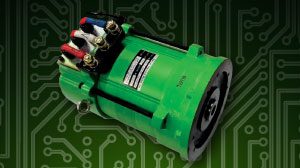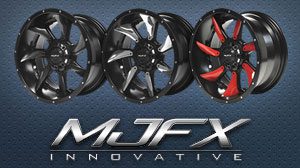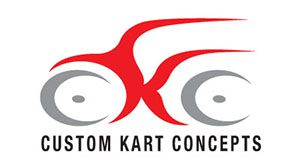By: Matt Vallez
The other day I received a call from Systems Designer Tony Thorn, a friend and professional acquaintance who works at Alltrax. He was all excited about a new speedometer he had just developed and brought to market. Tony (who invented the thing) ought to be excited, but his excitement was unusually contagious because he really believes in what he has created. After talking about the new device, with Tony for about a half hour I wanted to put my hands on one and try it out myself. So a week later I received a small box delivered to my attention, there it was about the size of a smallish desk top calculator a speedometer for any electric vehicle with a nice big display that anyone’s grandmother could read without glasses.
But where the rubber hits the road is when you install the thing and see how it works. The next weekend I made off with the Nivel company golf car, destination the Vallez experimental garage, from which many bikes and skateboards have never returned and one old Land Rover remains on life support. Once there I got the thing out and read through the instructions. I decide it will be easy and jumped in with both feet; I’ll have this thing installed in no time flat. I was correct with the exception of some difficultly I had removing the decorative steering column cover, it had to go or be anchored so as not to rotate when the speedometer is mounted on it. It seemed easier to just remove it.
Other than that, the install was easy with excellent instructions, when I bothered to read them. There are also a lot of pictures that help with the most technical parts. Don’t be freaked out by all the parts you get either, they are for all applications so you only use some of what you see. I only used two clamps and two of the small brackets. Once all the cables are in place and the unit is powered up so the backlight comes on your in business. Now by measuring the height of the tire and multiplying by pi and then a conversion factor from inches to millimeters you have your calibration number. Calibrating the thing for your specific tire and wheel set up only requires a short run through the prompts and some other questions and the speedometer is all ready for action.
I get out on the road and bring the golf car up to speed and lo and behold, there was 18 displayed on the speedometer, I was impressed. It has many other features including an odometer, clock and a heat sensor for your electric or gas motor. There are more but I am almost out of time. This is a great new device and will become more and more popular as people continue to use golf cars for everything they previously used a car for. This LSV movement is really picking up momentum with the Stimulus money getting spread all around in the form of tax credits.
Allowing LSV’s “low speed vehicles” on public roads has not been without controversy since they do not meet all of the DHST or DOT safety requirements. Getting your LSV registered for on road will require certain safety features added or updated including seat belts, headlights, taillights, and AS-5 compliant windshields. Some states also require rear view mirrors, reflectors, and speedometers with non-resettable odometers. Many states treat a moving violation on a golf car the same as if you were in a regular car. This includes speeding, drunk driving and reckless driving just to mention a few. This new device won’t keep you sober, but it will tell you how fast you are traveling which hopefully will be enough to keep you out of the long arm of the law.
Nivel now has in stock the new EX-RAY Speedometer, so don’t take my word for it try one of these out for yourself. This is a nice new device that one day soon will become a standard on all golf cars.
This article originally ran November/December 2009.










